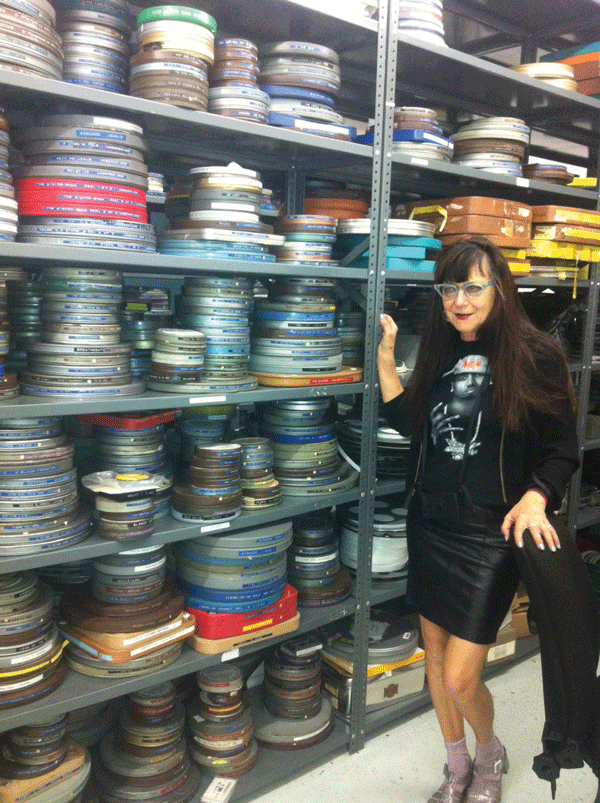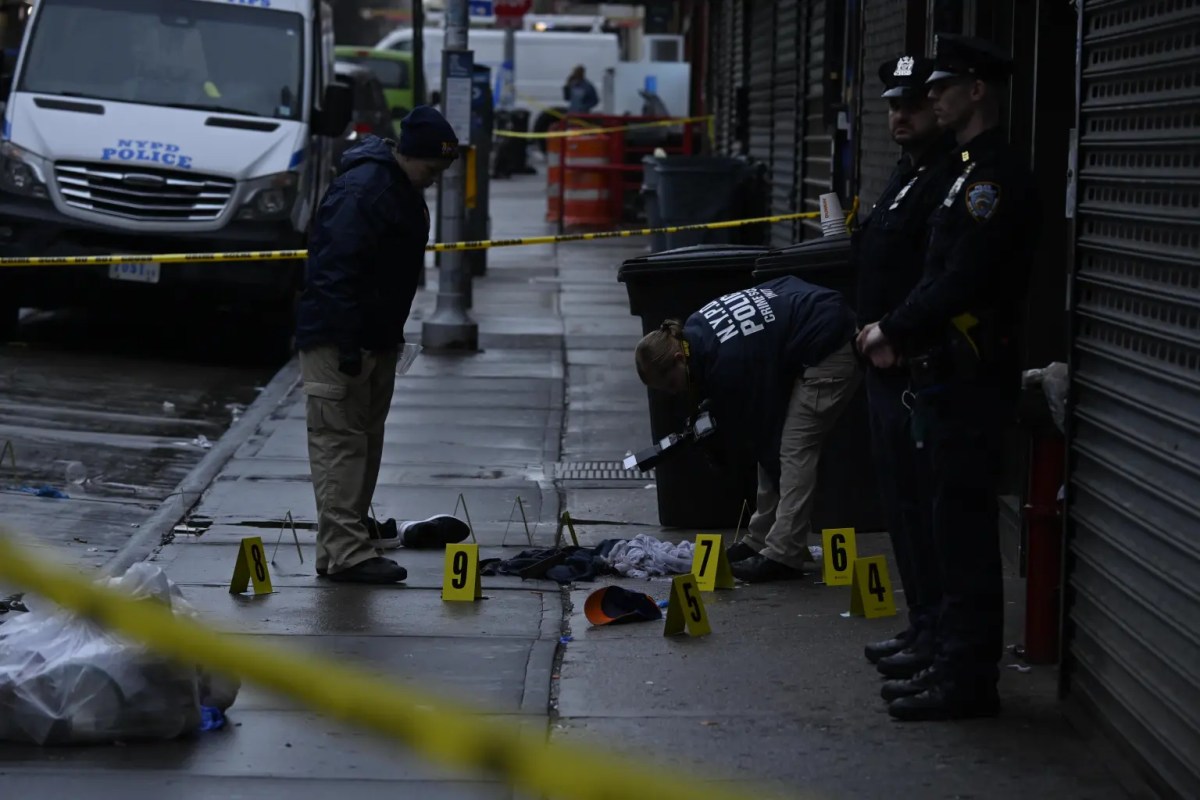BY LAEL HINES | “When I was young I went to a women’s party. It’s a gay party; all the women who worked in the factory got together and had a party. You have to visualize a place like Pennsylvania. It’s working class. Once a man came in and beat up a woman and tore the hair out of her head. Then she disappeared. She just vanished. I asked my mom where she went; my mother said, ‘Don’t ask questions.’ All these things haunted me, so when we made “Darling International” I put sounds inspired from that memory in there. That experience, it’s cathartic and concise to the speaker, you just keep hearing, ‘She vanished, she vanished.’ You hear this missionary saying, ‘These are unnatural acts,’ and he’s talking about homosexuality. The film is about being a lesbian.”
Filmmaker MM Serra was describing how she uses turbulent childhood experiences to inspire captivating, controversial and wonderfully creative films.

MM Serra at the Film-makers’ Co-op.
“I use the past to create my own identity,” she explained.
Serra, a longtime Lower East Side resident, is currently the executive director of the New American Cinema Group / The Film-makers’ Cooperative. It’s the largest distributor of independent and avant-garde films in the world. Formerly based at Anthology Film Archives, at Second Ave. and Second St., the co-op recently relocated to 475 Park Ave. South.
A group of influential New York City artists, including Jonas Mekas, Jack Smith, Robert Frank, Alfred Lesley and Andy Warhol, founded the co-op in 1961. It was created as an artistic element of the counterculture movement, spearheading opposition against censored, mainstream media.
Serra’s films align with the ideology of the Film-makers’ Co-op. Uncensored and raw, her pieces enter sexual and emotional realms rarely broached by Hollywood. Her vision and bravery stem from her identity and upbringing.
“My name is MM Serra,” she said. “MM stands for Mary Magdalene. That was my given name. I grew up in a puritan society, working-class Pennsylvania. With the name Mary Magdalene, I was shy, I was embarrassed or ashamed of the name. I always knew Mary Magdalene was not the happy housewife. She was the flesh, she was the other, and she was outside of the hetero-normative. I didn’t have the language, but I had the will to know the difference. What does it mean?
“And in the name developed my curiosity, my desire to intellectually develop an identity that would be unique,” she said. “Unique in the way that I would have the courage to go out and explore these issues that are feared and censored within our culture — in my culture, in my home, things that were not spoken or articulated. I wanted to develop this visual language. I make work because of my name Mary Magdalene,” she said. “My work is about the body, this idea of the abject body, body that is flesh, the body that bleeds, the body that vomits, the body that is scatological, the body that’s out of control. Not the symbolic body.”
Serra’s work uniquely focuses on the harsh, physical effects of self-inflicted pain and distortion on the body. She described her distinctive creative process for creating “Bitch Beauty,” an experimental documentary profiling the life of Anne Hanavan, a former heroin addict on the Lower East Side.
“I work and collaborate with artists like Anne Hanavan,” Serra related. “She said, ‘I will resurrect, I will change my life, I will create meaning, I will not deny who I was.’ I know this from my own childhood, my own background. I came from a very working-class background, so I saw everything, addiction, alcoholism, and I would stand back and say, ‘Why? What is this about? What does this mean?’ And in my art, in the portraits, I want to examine these long questions I’ve had since childhood.”
Serra also explores physical transformation in her film “Chop Off,” which showed at Sundance and at the Museum of Modern Art.
“ ‘Chop Off’ is about a man who cuts his body,” she said. “He does performance art of amputation. It took me three years because no one would work with me; they would be nauseated by it. But I thought he was the most fascinating and articulate artist. I mean, why not? What you see might upset you, but it’s a true part of human nature.”
Serra’s bold, uncensored films express her unique creative vision, which perfectly aligns with the Film-makers’ Co-op’s mission.
“For me, The Film-Makers’ Cooperative represents the hub of personal vision,” she said. “It is the opportunity for everyone to have a community for their work. My films are explicit and represent the range of emotional experiences that are censored in our culture — the abject body, not the erotic body for marketing or material gain. A term I coined for my creative process is ‘art (core),’ the exploration of the body as the site of spectacle. The Film-makers’ Co-op has an open-door policy — non-contractual, non-exclusive — open to all regardless of age, gender and class. It is the counterculture — then and now!”
Due to the generous donations of Charles S. Cohen, the Film-Maker’s Co-op is now comfortably headquartered at Park Ave. South and 32nd St. The location provides a screening room and adequate space to store their creative projects. The Film-makers’ Co-op steers away from the formulaic, often-generic product of Hollywood. It embraces the unique, realistic and perhaps difficult — making New York City its perfect home.
“New York does this; it takes you and it hardens you,” Serra said. “How I see New York is like a vampire woman. Dark, mysterious. It can wipe you out, it can suck your blood, it can destroy you. You’re walking down the street, you think you’re having a good day, and someone shoots a gun. Living in New York, everyone’s there, people are there. It’s real.”
Speaking of vampires, Serra is also an assistant professor at The New School, where she teaches a class on horror films called “The Skin Off Your Face: The Anatomy of Horror.” Her students tell her it’s their favorite class.

















